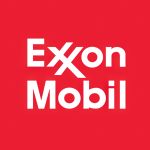Welcome to our dedicated page for Exxon Mobil news (Ticker: XOM), a resource for investors and traders seeking the latest updates and insights on Exxon Mobil stock.
Exxon Mobil Corporation (XOM) provides comprehensive energy solutions through global exploration, refining, and chemical manufacturing operations. This news hub offers investors and industry professionals direct access to the company's official communications and market-moving developments.
Track ExxonMobil's latest press releases including quarterly earnings disclosures, operational updates, and strategic initiatives. Our curated collection features verified announcements on production milestones, partnership agreements, and sustainability efforts without editorial commentary.
Key updates cover exploration activities, refinery capacity changes, petrochemical innovations, and energy transition projects. Bookmark this page for real-time access to XOM's regulatory filings, leadership statements, and industry position updates essential for market analysis.
ExxonMobil has received government approvals for the Yellowtail project in Guyana, its largest offshore project to date. Expected to produce 250,000 barrels of oil per day starting in 2025, the $10 billion development will include six drill centers and numerous production and injection wells. The project aims to enhance local employment and economic growth, with over 3,500 Guyanese currently involved. The company has identified over 10 billion oil-equivalent barrels in the Stabroek Block and plans up to 10 projects to exploit this resource.
Eikon Therapeutics has appointed Kenneth C. Frazier as its first independent director, effective April 1, 2022. Frazier, the former CEO of Merck (NYSE:MRK) and current director at Exxon Mobil Corporation (NYSE:XOM), brings extensive pharmaceutical industry expertise. His leadership at Merck was marked by the advancement of numerous significant medicines. Eikon's CEO, Roger M. Perlmutter, expressed that Frazier's knowledge and advocacy for social justice will greatly benefit the company's mission in drug discovery and development.
Exxon Mobil Corporation's board of directors announced that lead independent director Kenneth C. Frazier will not seek re-election at the shareholders' annual meeting on May 25. Joseph (Jay) L. Hooley will succeed him as lead director after the meeting. Frazier, who has served on the board since 2009, thanked the team for their work and noted that his departure is for personal reasons. He emphasized the company's progress in financial and operational performance through the energy transition. ExxonMobil remains a leading energy provider globally.
ExxonMobil has appointed Dan Ammann, former president and CEO of Cruise, as president of ExxonMobil Low Carbon Solutions, effective May 1. He replaces Joe Blommaert, who is retiring after 35 years at the company. Ammann brings significant experience from General Motors, where he led the company through its IPO and served as CFO. The Low Carbon Solutions unit aims to commercialize low-emission technologies including carbon capture, storage, and hydrogen production, contributing to global emission reductions and long-term shareholder value.
ExxonMobil has appointed Matt Furman as vice president of public and government affairs, effective April 1, succeeding Suzanne McCarron, who is retiring after 24 years. Furman brings extensive experience from Best Buy, where he led communications since 2012, and has held senior roles at Mars Chocolate, Google, and CNN. McCarron joined Mobil in 1998 and served in various leadership roles. The company continues to be a major player in the energy sector, leveraging technology to meet global energy demands.
At its Annual Investor Day, ExxonMobil (XOM) outlined strategic initiatives aimed at enhancing shareholder returns and competitive positioning in a lower-emissions energy landscape. Key plans include achieving structural cost reductions of
ExxonMobil announced plans for a hydrogen production plant and a large carbon capture project at its Baytown, Texas site, aiming to reduce emissions significantly. The facility would produce up to 1 billion cubic feet per day of blue hydrogen and enhance carbon capture capacity by over 10 million metric tons of CO2 annually. The project is crucial for lowering emissions in key sectors and supports ExxonMobil's commitment to achieve net-zero emissions from its operations by 2050. The final investment decision is anticipated in two to three years, subject to market conditions and regulatory approval.
ExxonMobil expresses support for Ukraine amid the ongoing military conflict with Russia. The company condemns Russia's actions that violate Ukraine's sovereignty and emphasizes compliance with international sanctions. ExxonMobil plans to discontinue operations in the Sakhalin-1 project and will not invest in new developments in Russia. The company underscores its commitment to safety, environmental protection, and operational integrity throughout this transition.
ExxonMobil has announced a $400 million investment to expand carbon capture and storage at its LaBarge facility in Wyoming. This project aims to capture an additional 1.2 million metric tons of CO₂ annually, enhancing the facility's total capture capacity to 7-8 million metric tons per year. The expansion aligns with ExxonMobil's 2030 emission-reduction goals and net zero ambitions by 2050, contributing to a 3% reduction in upstream operated emissions. Completion of engineering design is done, with potential startup in 2025, pending approvals.
ExxonMobil has agreed to sell its equity interest in Mobil Producing Nigeria Unlimited to Seplat Energy as part of its disciplined investment strategy. This transaction aims to support Nigeria's efforts to enhance local industry participation. ExxonMobil will retain its significant deepwater assets in Nigeria, ensuring continued operations in the region.
The sale includes a stake in four oil mining licenses and over 90 shallow-water platforms, but is expected to close later this year pending regulatory approvals. The company assures that there will be no job losses associated with this transaction.


